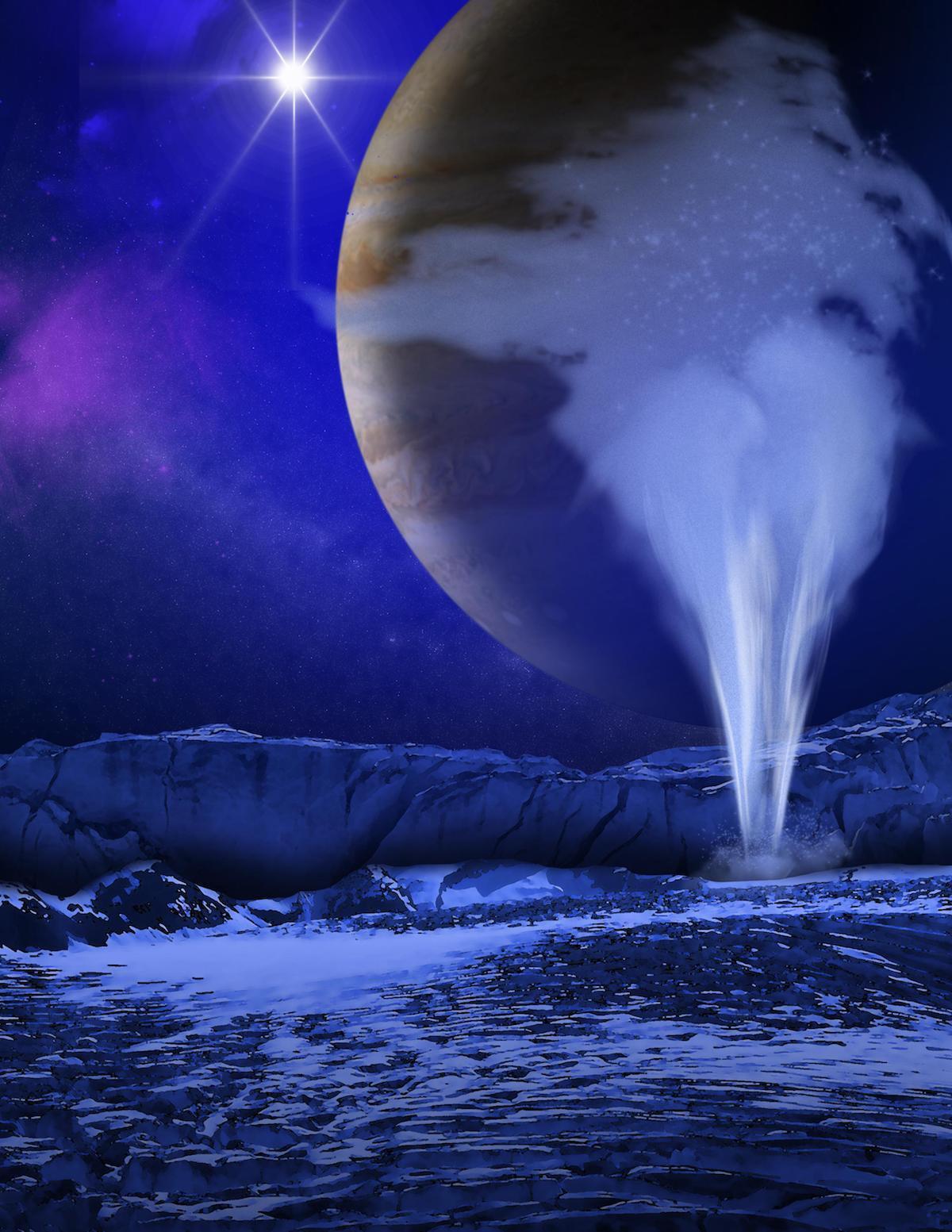All Resources
Artist's Concept of Europa Water Vapor Plume

This is an artist's concept of a plume of water vapor thought to be ejected off the frigid, icy surface of the Jovian moon Europa, located about 500 million miles (800 million kilometers) from the sun. Spectroscopic measurements from NASA's Hubble Space Telescope led scientists to calculate that the plume rises to an altitude of 125 miles (201 kilometers) and then it probably rains frost back onto the moon's surface. Previous findings already pointed to a subsurface ocean under Europa's icy crust.
The Hubble Space Telescope is a project of international cooperation between NASA and the European Space Agency. NASA's Goddard Space Flight Center manages the telescope. The Space Telescope Science Institute (STScI) conducts Hubble science operations. STScI is operated for NASA by the Association of Universities for Research in Astronomy, Inc., in Washington, D.C.
To view the images of the evidence for plumes visit: http://www.nasa.gov/content/goddard/hubble-europa-water-vapor. For more information about the Hubble Space Telescope, visit: http://www.nasa.gov/hubble.


